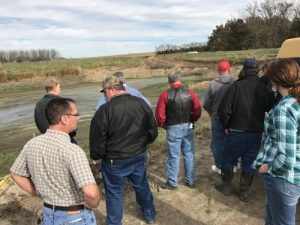 Collaborating on integrated projects can seem difficult, but, when implemented well, the potential for beneficial outcomes from such projects can make facing the challenges very worthwhile. That’s part of the reason why there’s growing movement by funding agencies toward supporting integrated, collaborative projects. Here are a few tips to help make collaborating on integrated efforts more enjoyable.
Collaborating on integrated projects can seem difficult, but, when implemented well, the potential for beneficial outcomes from such projects can make facing the challenges very worthwhile. That’s part of the reason why there’s growing movement by funding agencies toward supporting integrated, collaborative projects. Here are a few tips to help make collaborating on integrated efforts more enjoyable.
-
- Involve all collaborators from start to finish.
-
- When developing an integrated project, include all prospective collaborators from the beginning. Involving project team members early helps develop a coherent shared vision and makes collaborators feel like they are truly a team that is working on one integrated project.
- Avoid making last-minute requests for an outreach plan from extension, stakeholder engagement, partners in on-farm demonstration efforts, or matching funds, etc. Some thoughtful planning can lead to more productive collaborations and outcomes.
- Extension personnel appreciate being included as an author in research publications related to the project. Research can be much more impactful when practical implications of results are communicated to lay audiences and through stakeholder networks.
- Stakeholder engagement is important as well. By keeping the communication with the stakeholders open, you avoid trying to explain or give directions to someone without prior engagement.
-
- Be specific and ready to answer questions.
-
- Here are just a few on the questions that might be asked, and collaborators should be ready to answer:
-
- What are you asking of a collaborator and what will be done by someone else?
- What is the goal of the project?
- Is there funding to do everything you’re proposing?
- Will you need to hire other help?
-
- Clearly define the roles of collaborators and their organizations. This can help prevent confusion between collaborators on how much they are responsible for in the project.
- Have a clear title and summary of the project to communicate the project and how things tie together. This can help collaborators that might have joined after the collaboration has started.
- Make sure your plan includes objectives that specifically relate to the collaborator and have programming funds built into on-farm demonstration efforts.
- Here are just a few on the questions that might be asked, and collaborators should be ready to answer:
-
- Be ready for collaborators and stakeholders who are promoting or wary of products/systems.
-
- Use the diverse backgrounds and past experiences of your collaborators to your advantage. Collaborators with different perspectives may see things in ways that you don’t. Because of previous experiences, collaborators may be wary of some aspects of the proposal. For example:
-
-
-
- Specific products:
- Some collaborators may have concerns about side effects of products, so they may be wary of its use, but they may have ideas how to test for those side effects.
- Equipment usage or practicality:
- Some collaborators may better understand how the end user needs the equipment to work for them, so have them help with prototype development so it’s easier to take the equipment from prototype to commercial production.
- Certain systems:
- If you’re trying to bring a certain system to a new area, stakeholders and collaborators may be able to provide insight about other systems that have been tried in their area, both successfully and not-so-much.
- Specific products:
-
- Just because collaborators and stakeholders may be wary of your proposal doesn’t mean they shouldn’t be included. In fact, the opposite may be true. They may be able to guide the proposal in a way that strengthens it but be prepared for a little push back.
-
-
- Involve all collaborators from start to finish.
It takes some effort to build a productive team and keep everyone on the same page, but good collaborations are hard to beat.



